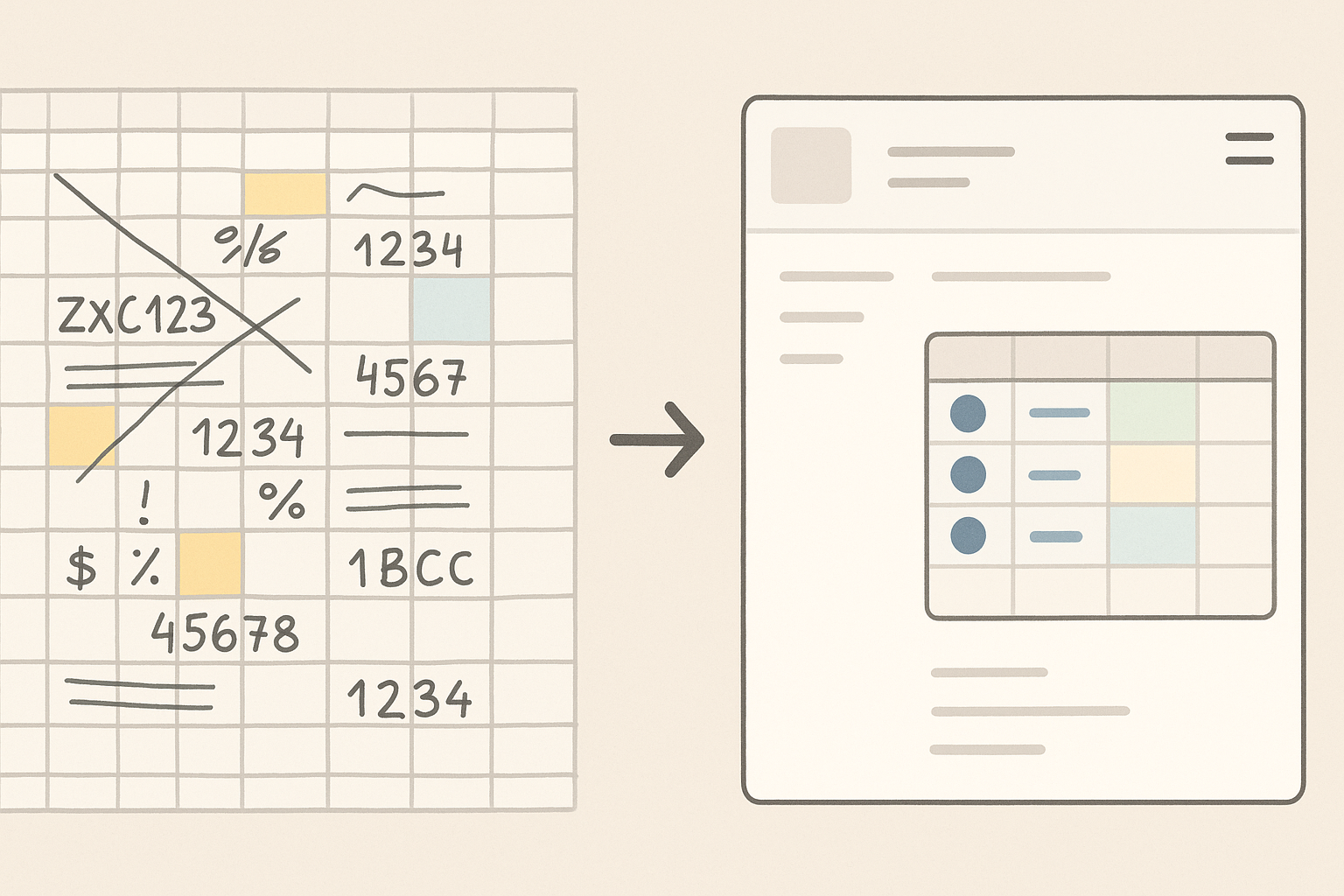For years, spreadsheets have been the trusty workhorse for businesses worldwide, diligently tracking everything from inventory to finances. They are "Easy" to use, you can simply open one and start entering whatever data you want. When it comes to procurement and vendor management, many companies, especially in manufacturing, still rely on them. They're accessible, flexible, and seemingly "free."
However, as your operations scale and supplier network grows and the complexity of your procurement operations increases, spreadsheets quickly morph from a helpful tool into a significant bottleneck. Everyone has a differnt version of the same data on their computer, and there is no single source of truth. It becomes increasingly difficult to collaborate, and leaders are not able to trust the spreadsheets to make business decisions.
If you’re still juggling multiple Excel files to keep tabs on your procurement and vendor data, supplier compliance, and contract management, it’s time to look beyond the rows and columns. Here’s why a dedicated Vendor Management Software (VMS) is no longer a luxury, but a necessity for efficient supplier relationship management.
The Hidden Costs of Spreadsheet-Based Vendor Management
While a spreadsheet itself might be free (if you use open source software), the hidden costs associated with using it for supplier management are anything but.
- Data Silos & Inaccuracy: When your entire company starts working on spreadsheet, information gets scattered across different files, departments, and even individual computers. This leads to outdated vendor contact information, inconsistent supplier data, and a high risk of errors. How do you ensure supplier compliance when you're not sure which version of their certification is current?
- Time Sink & Manual Work: Think about the hours spent on manual supplier onboarding, updating details, tracking purchase orders, or reconciling invoices. This repetitive, administrative work pulls your procurement team away from strategic tasks.
- Lack of Visibility & Control: Can you easily tell which vendors are critical, which contracts are expiring, or what your total spend is with a particular supplier across various departments? Spreadsheets offer limited spend visibility and audit trails, making risk management and strategic decision-making incredibly difficult.
- Security & Compliance Risks: Sensitive vendor financial data or supplier contracts stored in easily shareable files are a security nightmare. Furthermore, proving adherence to regulatory compliance (e.g., tax forms, certifications) becomes a monumental task without a centralized, secure system.
- Poor Supplier Experience: When suppliers have to email documents repeatedly, chase payment statuses, or provide the same information to multiple contacts, it reflects poorly on your organization and can strain valuable supplier relationships.
The Power of Dedicated Vendor Management Software (VMS)
A modern VMS solution addresses these challenges head-on, transforming your vendor management process from a reactive chore into a strategic advantage.
1. Centralized Vendor Hub: A Single Source of Truth
- Say goodbye to data silos. A dedicated VMS provides a single, secure vendor database where all supplier information – contact details, bank accounts, tax IDs, certifications, contracts, and communication history – is stored and updated in real-time. Your suppliers also have visibility into their master data stored with you, so they can request updates to ensure thier data is always correct and you are always compliant.
2. Streamlined Supplier Onboarding & Compliance
- Automate your supplier onboarding process. Vendors can securely self-register and upload required documents through a dedicated vendor portal. Workflows ensure all necessary approvals and checks are completed, drastically reducing onboarding time and ensuring supplier compliance from day one.
3. Enhanced Purchase Order & Invoice Management
- Beyond just tracking, a VMS facilitates clear communication on purchase orders. Suppliers can view POs issued to them, provide real-time status updates (e.g., dispatch, tracking information), and upload proof of deliveries and invoices directly. You can update them with the approval status of their invoices and payments made to them. This provides real-time AP automation and invoice tracking visibility.
4. Comprehensive Contract & Document Management
- Never miss a contract renewal again. Store all vendor contracts securely, with automated alerts for expiration dates. Easily attach certifications, NDAs, and other critical documents to each vendor profile, ensuring easy access and regulatory compliance.
5. Improved Spend Visibility & Risk Management
- With all data centralized, a VMS provides powerful spend analytics and reporting capabilities. Gain insights into who you're spending with, on what, and identify opportunities for cost savings. Better data leads to better spend management and more informed strategic sourcing decisions, saving your organization a significant chunk of their spend.
6. Stronger Supplier Relationships
- A transparent, efficient vendor portal empowers your suppliers. They can self-serve for information, submit documents, and track payment statuses, reducing their need to contact your team for basic queries. This fosters trust and strengthens crucial supplier relationships.
Making the Leap: From Spreadsheets to Strategic P2P
The transition from manual spreadsheet management to a dedicated P2P software might seem daunting, but the long-term benefits far outweigh the initial effort. It’s an investment in efficiency, accuracy, and strategic advantage.
By centralizing your supplier data, automating routine tasks, and gaining unprecedented spend visibility, your procurement team can shift from administrative firefighting to truly strategic work – driving value, mitigating risks, and building robust, reliable supply chains.
Don't let outdated tools hold your procurement process back. It's time to move beyond the spreadsheet and embrace the future of vendor management.
